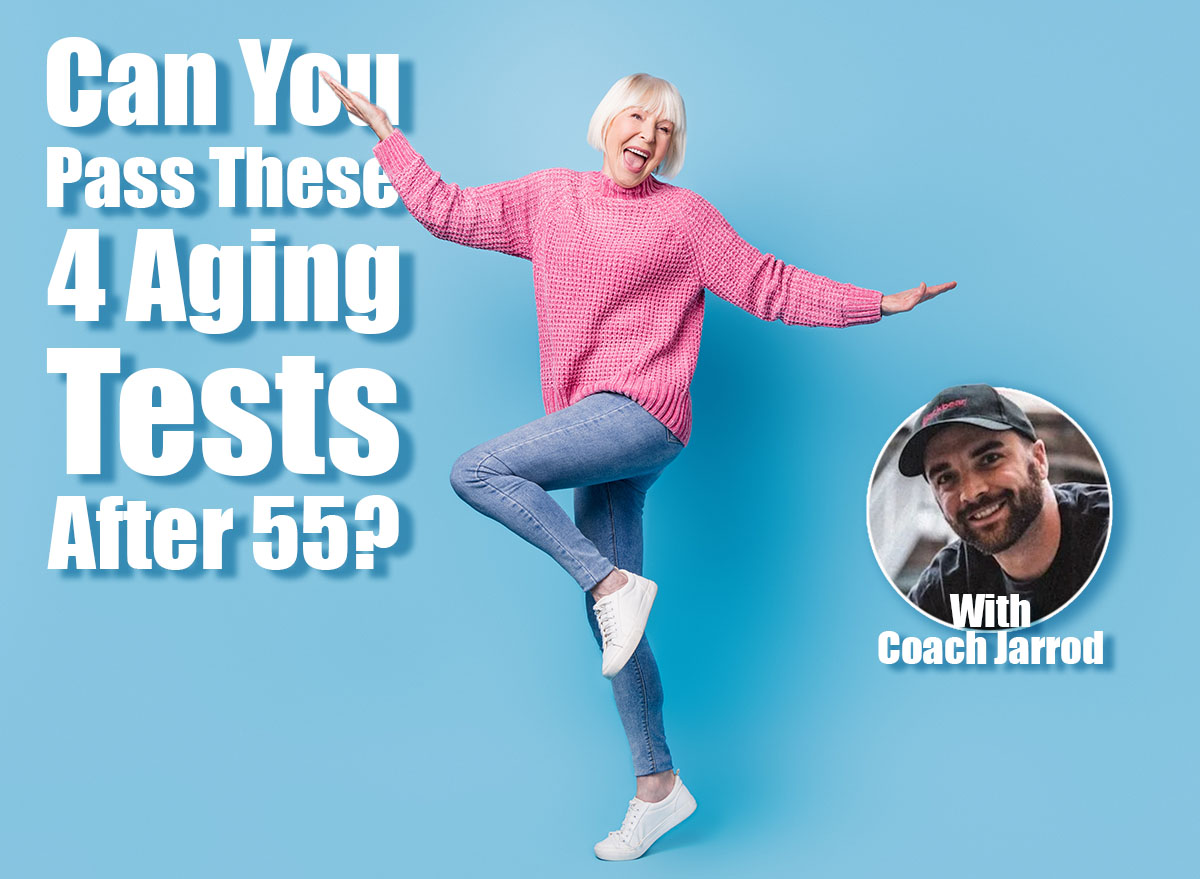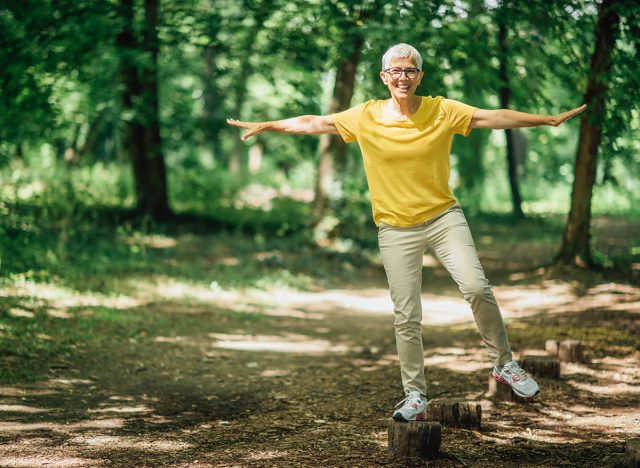Over 55? If You Can Pass These 4 Simple Balance Tests, You’re Aging Backwards

Aging well goes beyond strong muscles or endurance. Balance is one of the most evident signs of how your body is holding up with time. If you can stand tall, move smoothly, and maintain control in challenging positions, you’re building resilience that keeps you independent, energetic, and youthful.
After 55, balance becomes a key marker of health. It protects you from falls, preserves mobility, and sharpens the nervous system. Possessing strong balance shows that your muscles, joints, and brain are working together at a high level. It is an underrated measure of fitness that predicts longevity better than many traditional tests.
One study of more than 1,700 adults between the ages 51 and 75 found that people who could not stand on one leg for 10 seconds were at an 84% higher risk of mortality over the next seven years compared to those who passed the test. That risk remained even after accounting for age, weight, and other health conditions.
The following four balance tests are simple to perform but powerful in what they reveal. Passing them signals that your body is holding on to qualities that usually decline with age. Each test challenges your coordination, lower body strength, and ability to sense movement in ways that matter for everyday life.
Take the tests below in a safe environment where you can grab support if needed. Track your scores honestly and see where you stand. If you pass them with ease, you are well ahead of the curve. If not, you now have a clear target to train toward.
Over 55? Pass These 4 Balance Tests to Age in Reverse
Test 1: The Single-Leg Stand
Standing on one leg lights up stabilizer muscles in your feet, ankles, hips, and core. It also challenges your brain’s ability to process balance cues from your inner ear and vision. Strong performance reflects healthy joint stability and coordination. These skills protect you during everyday tasks like climbing stairs, stepping off curbs, or catching yourself when you stumble.
How to Do It:
- Stand tall with feet hip-width apart and arms at your sides.
- Shift your weight onto one foot without leaning or wobbling.
- Lift the opposite foot a few inches off the ground.
- Hold the position with a steady posture and eyes forward.
- Repeat on the other leg for a complete assessment.
Score Rankings:
- Excellent: 30 seconds or more each leg without touching down.
- Good: 15 to 29 seconds each leg.
- Needs Work: Less than 15 seconds, or heavy wobbling.
Test 2: Heel-to-Toe Walk
This test assesses dynamic balance, or your ability to maintain stability while moving. Walking heel-to-toe strengthens coordination between your core and lower body. It trains your nervous system to stay in control on narrow or uneven surfaces. Strong results show you are maintaining agility and movement confidence with age.
How to Do It:
- Stand with feet together on a flat surface.
- Step forward, placing your heel directly in front of your opposite foot’s toes.
- Continue for 10 slow, deliberate steps in a straight line.
- Keep your arms relaxed at your sides and your gaze forward.
- Repeat in the opposite direction if space allows.
Score Rankings:
- Excellent: All 10 steps in a straight line without missteps.
- Good: 7 to 9 steps with minimal wobble.
- Needs Work: Fewer than 7 steps or frequent side steps for balance.
Test 3: The Sit-to-Stand Without Hands
Rising from a chair without using your hands measures leg strength, balance, and coordination. This movement translates directly into daily life, where the ability to stand independently shows both functional strength and balance under load. Passing this test confirms that your lower body is strong and your nervous system is efficient.
How to Do It:
- Sit in a sturdy chair with your feet flat and arms crossed over your chest.
- Engage your core and lean forward slightly.
- Push through your heels to stand up without swinging your arms.
- Lower yourself back down under control.
- Perform five consecutive reps to complete the test.
Score Rankings:
- Excellent: 5 smooth reps without losing balance or needing assistance.
- Good: 3 to 4 reps with steady control.
- Needs Work: Fewer than 3 reps, or reliance on hands for support.
Test 4: The Tandem Stance with Eyes Closed
Closing your eyes removes visual cues, forcing your inner ear and body awareness to take over. This test reveals whether you can maintain equilibrium when one of your primary stabilizers is removed. Success shows that you have built deeper balance reserves that help protect you in unexpected situations.
How to Do It:
- Stand with one foot directly in front of the other, heel touching toe.
- Cross your arms over your chest.
- Close your eyes slowly while keeping your posture tall.
- Hold the position without stepping out.
- Switch the lead foot and repeat.
Score Rankings:
- Excellent: 20 seconds or more each side without stepping out.
- Good: 10 to 19 seconds before losing balance.
- Needs Work: Less than 10 seconds or repeated stepping.
The Best Tips for Improving Your Balance After 55

Improving your balance takes consistent practice and attention to detail. These tips build strength, sharpen coordination, and keep your nervous system engaged so you can score higher on every test:
- Train single-leg strength: Incorporate lunges, step-ups, and single-leg deadlifts into your weekly workouts.
- Strengthen your core: Planks, side planks, and controlled rotational moves give your midsection the stability to support balance.
- Challenge stability daily: Practice standing on one foot while brushing your teeth or waiting for the microwave.
- Move in multiple directions: Add side steps, diagonal lunges, or agility drills to train balance from every angle.
- Progress gradually: Start with support when needed, then reduce reliance on it as you improve.
- Prioritize consistency: Even five minutes a day of balance training adds up to noticeable improvements over time.
References
- Araujo, Claudio Gil et al. “Successful 10-second one-legged stance performance predicts survival in middle-aged and older individuals.” British journal of sports medicine vol. 56,17 (2022): 975-980. doi:10.1136/bjsports-2021-105360